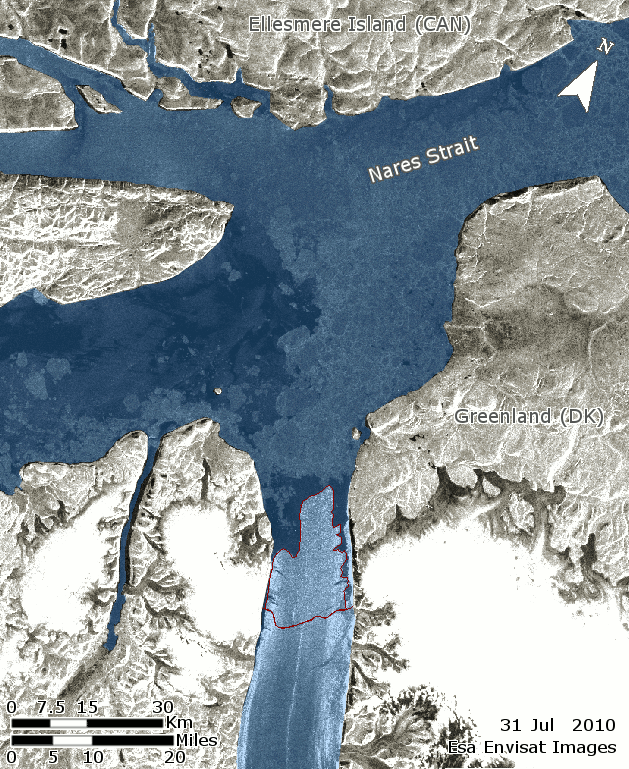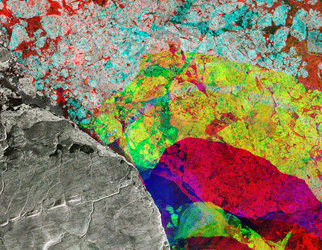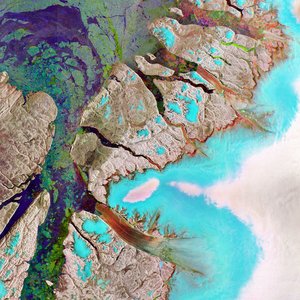
Old Arctic sea ice going down the drain
An ‘ice arch’ in the Lincoln Sea, part of the Arctic Ocean, acts as a bridge, holding back the older thicker sea ice. This arch normally breaks up in July, but this year it has disintegrated much earlier, allowing a southward flowing current to quickly flush away significant amounts of old, thicker sea ice through Nares Strait.
Nares Strait is a narrow channel of water that separates Greenland and Ellesmere Island in Canada. A significant amount of sea ice is pushed through this passage every summer and autumn. This year, however, the early collapse of the Lincoln sea arch, which normally hems in the ice until later, could mean that a greater proportion of the oldest and thickest Arctic sea ice is at risk of being lost.
Ice transport through Nares Strait contributes to ice loss from the Arctic Basin, though typically this is less than 10% of the ice that is exported through Fram Strait to the east of Greenland.
However, sea ice that is removed from the Lincoln Sea is some of the thickest and oldest ice in the Arctic. Consequently, Nares Strait ice export represents an important contribution to Arctic ice volume loss, and is critical to the survival of the perennial ice pack.
Using images captured by the Copernicus Sentinel-1 mission between the beginning of October 2016 and mid-May 2017, the animation shows large chunks or ‘floes’ of old ice effectively being ‘flushed down the drain’ at a considerable rate.
The animation also indicates sustained periods ice being transported north–eastward along the coast of Ellesmere Island, feeding thick old ice into the Lincoln Sea. This contributes to an overall reduction in the volume of Arctic sea ice and raises concerns about how Nares Strait exports ice in what is forecasted to be a record summer ice volume minimum. The summer minimum is reached in September.






